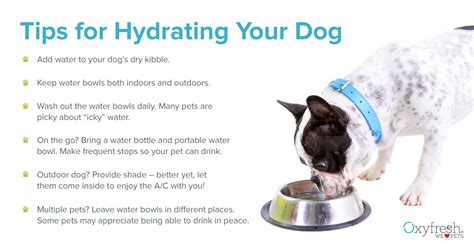Introduction
Dehydration is a serious condition that can affect pets of all ages, breeds, and sizes. It occurs when a pet loses more fluids than it takes in, and can be caused by a variety of factors, including:

- Diarrhea
- Vomiting
- Excessive panting
- Heat stroke
- Diabetes
- Kidney disease
Symptoms of Pet Dehydration
The symptoms of pet dehydration can vary depending on the severity of the condition, but may include:
- Lethargy
- Loss of appetite
- Dry mouth and gums
- Sunken eyes
- Rapid heart rate
- Weak pulse
- Skin tenting
- Decreased urine output
- Dark-colored urine
Treatment for Pet Dehydration
The treatment for pet dehydration will depend on the severity of the condition and the underlying cause. In mild cases, dehydration can be treated at home with fluids and electrolytes. In more severe cases, hospitalization may be necessary.
At-home treatment for pet dehydration
If your pet is mildly dehydrated, you can treat it at home with fluids and electrolytes. Offer your pet small amounts of water or Pedialyte every few hours. You can also give your pet electrolyte supplements, which are available over-the-counter.
Hospitalization for pet dehydration
If your pet is severely dehydrated, it will likely need to be hospitalized for treatment. In the hospital, your pet will receive intravenous fluids and electrolytes to rehydrate it. It may also receive other medications to treat the underlying cause of the dehydration.
Prevention of Pet Dehydration
The best way to prevent pet dehydration is to make sure your pet has access to fresh water at all times. You should also provide your pet with a cool place to rest in hot weather. If your pet is exercising or playing outside, make sure to offer it water frequently.
Conclusion
Dehydration is a serious condition that can be life-threatening if not treated promptly. If you think your pet may be dehydrated, contact your veterinarian immediately.
Table 1: Symptoms of Pet Dehydration
| Symptom | Description |
|---|---|
| Lethargy | Your pet may be tired and less active than usual. |
| Loss of appetite | Your pet may not be interested in eating or drinking. |
| Dry mouth and gums | Your pet’s mouth and gums may be dry and sticky. |
| Sunken eyes | Your pet’s eyes may appear sunken into its head. |
| Rapid heart rate | Your pet’s heart rate may be faster than usual. |
| Weak pulse | Your pet’s pulse may be weak or difficult to feel. |
| Skin tenting | When you pinch your pet’s skin, it may take a few seconds to return to its normal position. |
| Decreased urine output | Your pet may be urinating less frequently or producing less urine than usual. |
| Dark-colored urine | Your pet’s urine may be dark yellow or brown in color. |
Table 2: Treatment for Pet Dehydration
| Treatment | Description |
|---|---|
| Fluids | Your pet will receive intravenous fluids to rehydrate it. |
| Electrolytes | Your pet will receive electrolytes to replace the minerals it has lost. |
| Medications | Your pet may receive other medications to treat the underlying cause of the dehydration. |
Table 3: Prevention of Pet Dehydration
| Prevention | Description |
|---|---|
| Access to fresh water | Make sure your pet has access to fresh water at all times. |
| Cool place to rest | Provide your pet with a cool place to rest in hot weather. |
| Offer water frequently | If your pet is exercising or playing outside, make sure to offer it water frequently. |
Table 4: Common Mistakes to Avoid When Treating Pet Dehydration
| Mistake | Description |
|---|---|
| Giving your pet too much water | Giving your pet too much water can lead to water intoxication, which can be fatal. |
| Using the wrong type of fluids | Not all fluids are created equal. Some fluids, such as sports drinks, can actually worsen dehydration. |
| Waiting too long to seek veterinary care | If your pet is severely dehydrated, it is important to seek veterinary care immediately. |
Step-by-Step Approach to Treating Pet Dehydration
- Assess your pet’s condition. Determine how severe your pet’s dehydration is by checking for the symptoms listed above.
- Contact your veterinarian. If your pet is severely dehydrated, it is important to contact your veterinarian immediately.
- Follow your veterinarian’s instructions. Your veterinarian will likely recommend a treatment plan that includes fluids, electrolytes, and other medications.
- Monitor your pet’s progress. Once your pet has started treatment, it is important to monitor its progress closely. Contact your veterinarian if your pet’s condition does not improve or worsens.
Expanding Market Insights
The pet dehydration market is expected to grow significantly in the coming years. This growth is being driven by a number of factors, including:
- The increasing popularity of pets
- The rising awareness of pet dehydration
- The development of new and innovative pet dehydration treatments
As the market grows, new opportunities will emerge for businesses that can provide innovative and effective pet dehydration solutions.
Conclusion
Pet dehydration is a serious condition that can be life-threatening if not treated promptly. By understanding the symptoms and treatment of pet dehydration, you can help your pet stay healthy and hydrated.





















